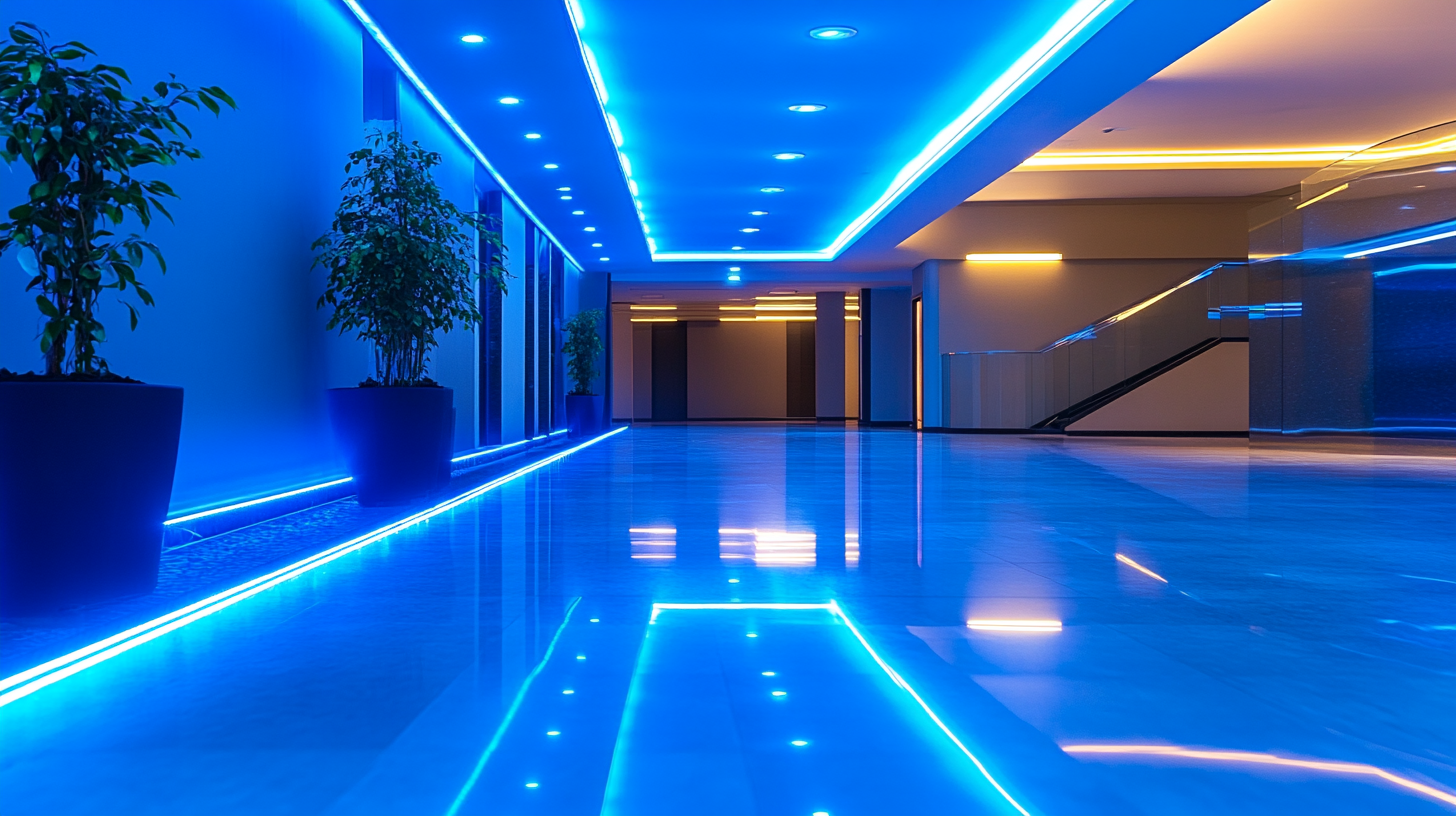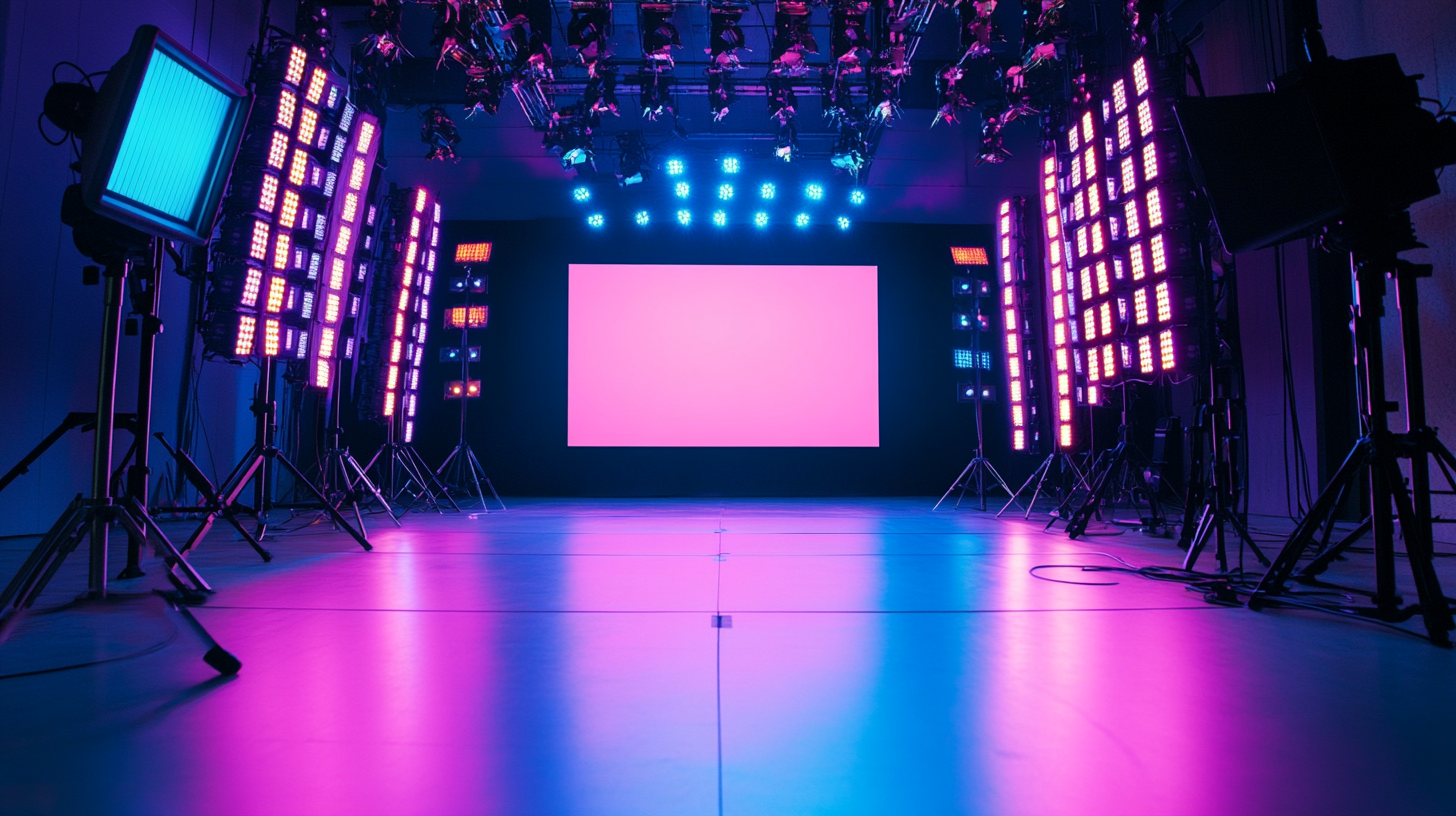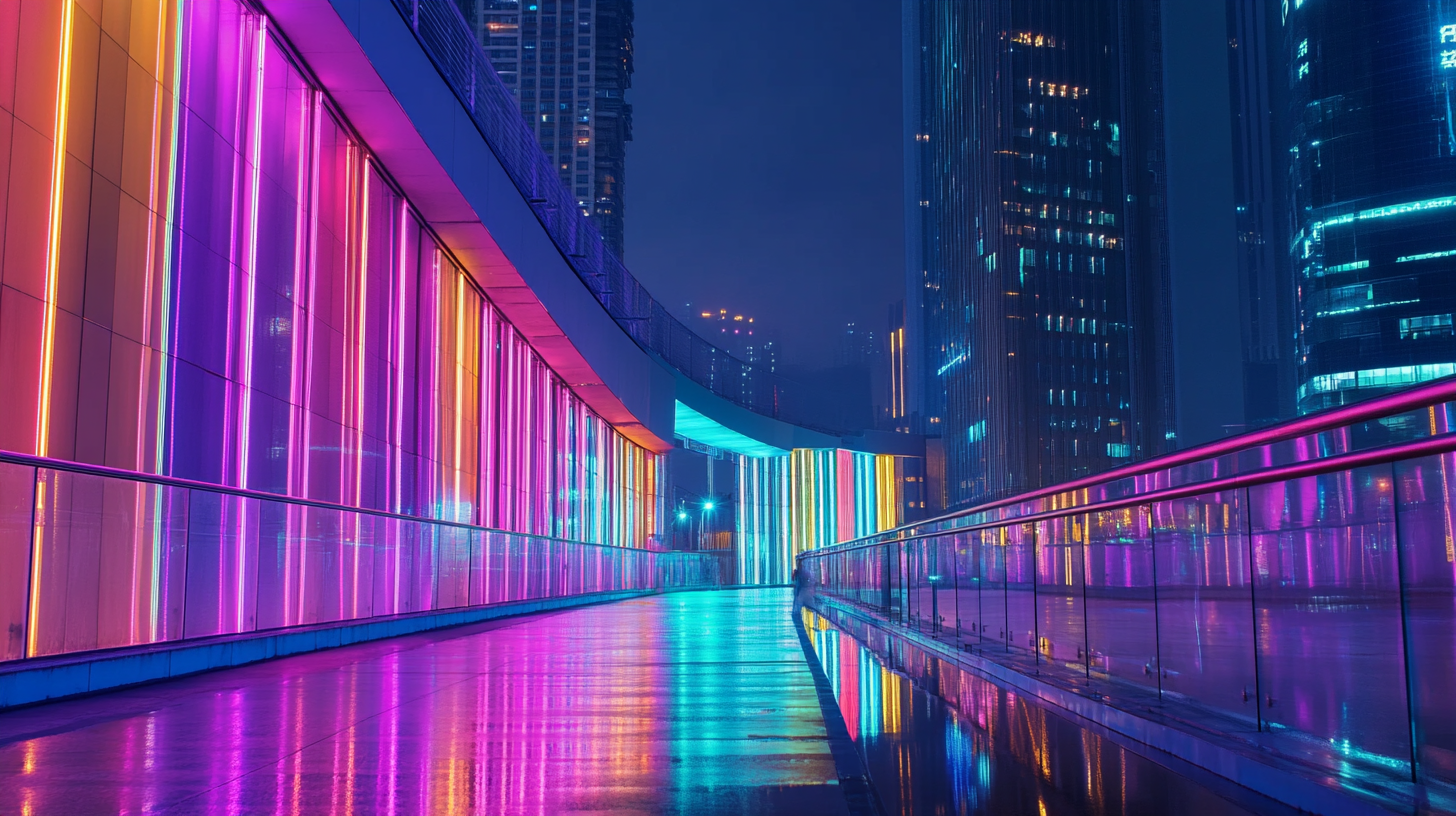Exploring the Future of Led Lighting Solutions Market Trends and Insights for 2025
As we step into an era marked by rapid technological advancements, the lighting industry is no exception to this transformative trend. The LED Lighting Solutions market has emerged as a pivotal player, setting new standards in energy efficiency, longevity, and versatility. By 2025, we can anticipate a dramatic evolution in the adoption and implementation of LED lighting technologies across various sectors, driven by increasing environmental concerns and the push for sustainable practices. This blog post aims to explore the key trends and insights that are likely to shape the future landscape of LED Lighting Solutions.
In the coming years, innovation will take center stage as manufacturers and consumers alike seek cutting-edge advancements that enhance functionality and aesthetic appeal. The transition from traditional lighting to LED alternatives not only promises significant cost savings but also aligns with global initiatives focused on reducing carbon footprints. As we delve into the market trends for 2025, we will analyze the factors influencing growth, the emergence of smart lighting solutions, and the broader implications for both residential and commercial applications. Join us as we uncover the compelling future of LED Lighting Solutions and what it means for industries and consumers around the world.

Current State of LED Lighting Solutions: Market Overview and Key Players
The current state of the LED lighting solutions market reveals significant growth and innovation, driven by increasing energy efficiency demands and advancements in technology. According to a recent report by Fortune Business Insights, the global LED lighting market was valued at approximately USD 84.5 billion in 2021 and is projected to reach around USD 188.2 billion by 2028, growing at a CAGR of 12.5%. This robust growth trajectory underscores the critical role that LED technology plays in modern lighting applications across residential, commercial, and industrial sectors. Key players within the LED lighting space include renowned companies such as Philips Lighting, Osram, and Cree, which have consistently pushed the envelope of technology by introducing products that offer longer lifespans, reduced energy consumption, and improved lighting quality. For instance, Philips has reported a pioneering trend toward smart LED solutions, integrating IoT capabilities to enhance user experience and energy management. Meanwhile, Osram focuses on sustainability and innovation, emphasizing the importance of meeting regulatory standards while also delivering high-performance lighting solutions. In addition to established players, new entrants and startups are increasingly making their mark, driven by niche applications and advancements in smart lighting. Reports indicate a surge in demand for programmable and adaptive lighting systems, which are expected to shape the future landscape of the market. As more consumers and businesses seek to reduce their carbon footprint and energy costs, the LED lighting solutions market is poised for significant evolution, presenting myriad opportunities for growth and development.

Emerging Technologies Shaping the Future of LED Lighting Solutions
The LED lighting solutions market is poised for remarkable growth as emerging technologies continue to reshape the industry. With projections estimating the market value to reach approximately USD 155.31 billion by 2032, up from USD 65.17 billion in 2023, it is clear that innovation is driving this expansion. One of the most exciting advancements comes from the integration of metal-halide perovskites with LED bulbs, significantly enhancing data transmission speeds in homes and offices. This breakthrough not only promises to improve everyday connectivity but also positions LED technology at the forefront of the Internet of Things (IoT) revolution.
In the agriculture sector, new advancements in greenhouse lighting are unleashing the potential for increased flexibility, higher energy efficiency, and faster crop cycles. Customized lighting solutions tailored to specific plant needs can optimize growth conditions and yield. As sustainability gains traction, the focus on eco-friendly and efficient lighting technologies is shaping cultivation practices, making them more resilient to climate change.
Furthermore, smart lighting systems are transforming building designs by integrating advanced control technologies, which allow for real-time adjustments to illumination based on occupancy and natural light levels. This development marks a critical step towards creating smarter, more energy-efficient structures. Innovative lighting solutions are thus not only enhancing aesthetics but also paving the way for significant energy savings and reduced environmental impact. The future of LED lighting is indeed bright, as it continues to illuminate various sectors with cutting-edge technology and sustainable practices.

Sustainability and Energy Efficiency in LED Lighting: Trends for 2025
As the world gravitates toward more sustainable practices, the LED lighting solutions market is set to experience significant growth by 2025. This evolution is primarily driven by an increasing demand for energy-efficient lighting options that not only lower operational costs but also minimize environmental impact. Companies are now prioritizing sustainable manufacturing processes and recyclable materials in their product designs, aiming to meet both consumer expectations and regulatory standards.
The trend towards energy efficiency is evident in the development of smart LED technologies that integrate seamlessly with smart home systems. These innovations allow users to optimize their energy usage through automated controls and real-time monitoring, contributing to substantial energy conservation. Furthermore, advancements in LED technology, such as tunable white light and dynamic color control, demonstrate how lighting can be customized to enhance well-being and productivity, aligning with the growing focus on health-conscious solutions.
Moreover, the circular economy model is gaining traction in the LED industry, encouraging manufacturers to rethink product lifecycles. By implementing take-back programs and refurbishing initiatives, companies can reduce waste and promote reuse, which is essential for a sustainable future. As these trends unfold, the LED lighting market will not only become more efficient but also play a crucial role in the broader context of global sustainability efforts.

Consumer Preferences and Market Demand: What to Expect in LED Lighting
As we look toward 2025, consumer preferences in the LED lighting sector are evolving, influenced by both technological advancements and market demands. Recent data shows that the landscape lighting market has garnered considerable attention, valued at USD 12.49 billion in 2023, and it is expected to witness robust growth with a projected CAGR of 8.9% from 2024 to 2030. This increasing trend highlights the shift towards outdoor lighting solutions that enhance aesthetics and security, further fueled by a growing awareness of energy efficiency among consumers.
As consumers become more environmentally conscious, the demand for energy-efficient lighting options like LEDs continues to surge. Reports indicate that consumers are showing a preference for smart lighting solutions that can be controlled remotely, ultimately contributing to energy savings. Furthermore, the integration of outdoor lighting with smart home systems is becoming increasingly popular, persuading manufacturers to innovate and offer comprehensive solutions that meet this rising need.
Additionally, rural and urban landscapes are both undergoing transformations where enhanced outdoor lighting is sought not just for utility but to create ambiance and improve safety. The versatility of LED lighting allows for customizable solutions suitable for various architectural styles and personal preferences. As we approach 2025, companies in the LED lighting market must prioritize consumer insights to align their offerings with these evolving demands, ensuring that they remain competitive and relevant in this dynamic industry.
Regulatory Developments and Their Impact on the LED Lighting Industry
The LED lighting industry is poised for substantial growth as we approach 2025, largely influenced by a range of regulatory developments globally. Governments are increasingly recognizing the environmental benefits of LED technology, leading to stricter energy efficiency standards and incentives for adoption. According to a report by Allied Market Research, the global LED lighting market is projected to reach $162.61 billion by 2025, propelled by policies aimed at reducing carbon emissions and promoting sustainable energy solutions.
In the United States, for instance, the Department of Energy (DOE) has implemented energy-saving initiatives that encourage manufacturers to produce more efficient LED products. The implementation of the Energy Independence and Security Act (EISA) has set forth guidelines that increasingly phase out traditional incandescent bulbs in favor of LED technology. As a result, the demand for LED lighting solutions is expected to rise, with forecasts indicating a compound annual growth rate (CAGR) of over 25% in the commercial sector alone.
Similarly, the European Union's Ecodesign Directive continuously pushes for enhancement in lighting products' energy performance and sustainability. With penalties for non-compliance, manufacturers are compelled to innovate, creating energy-efficient products that meet the evolving standards. According to research by Market Research Future, compliance with these regulations is anticipated to drive up the adoption of smart LED systems, which are not only energy-efficient but also adaptable to smart home ecosystems. This signifies a transition not just in product usage but in the entire approach toward energy consumption in the lighting sector.

